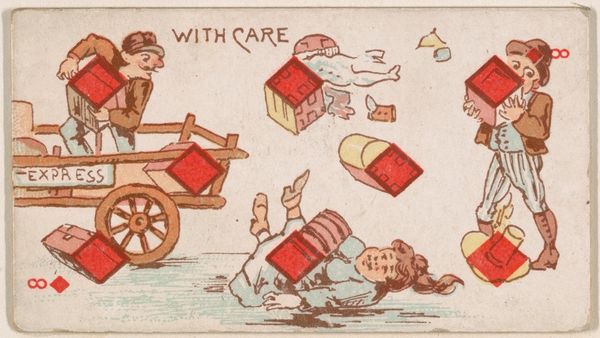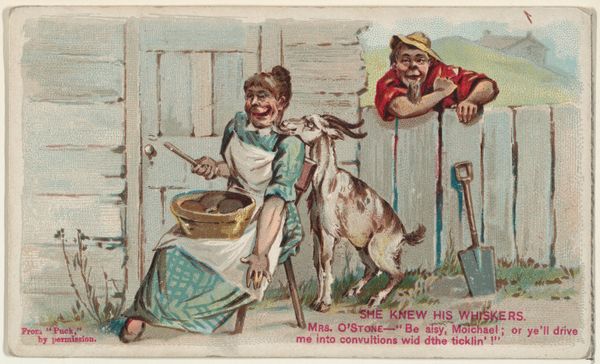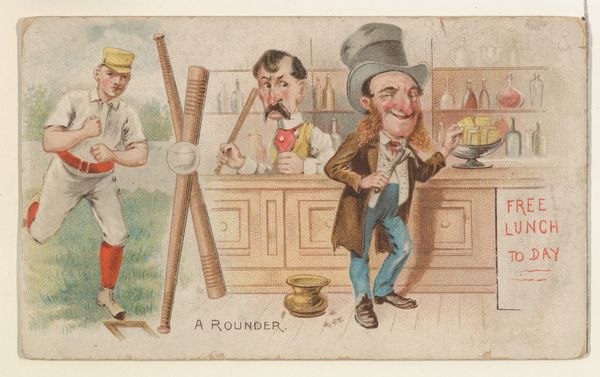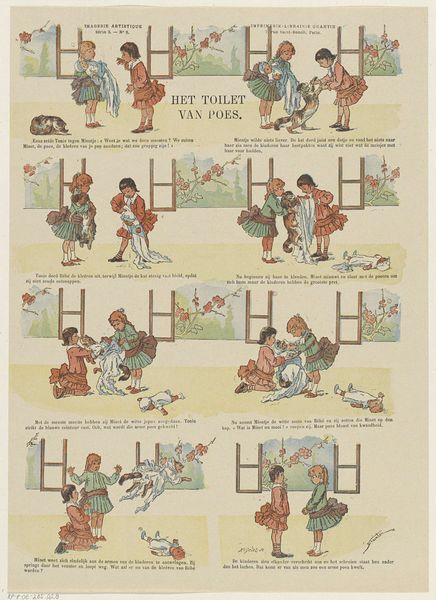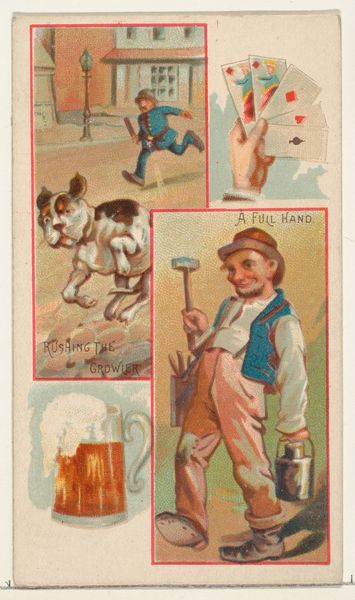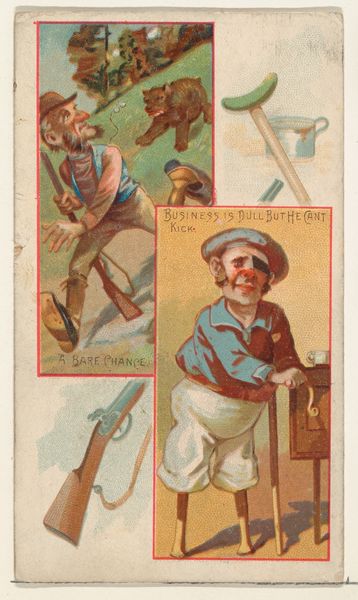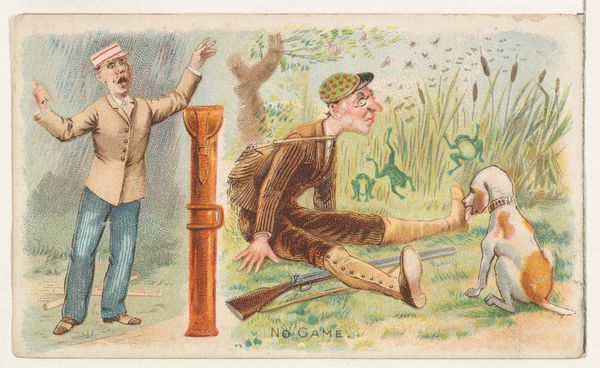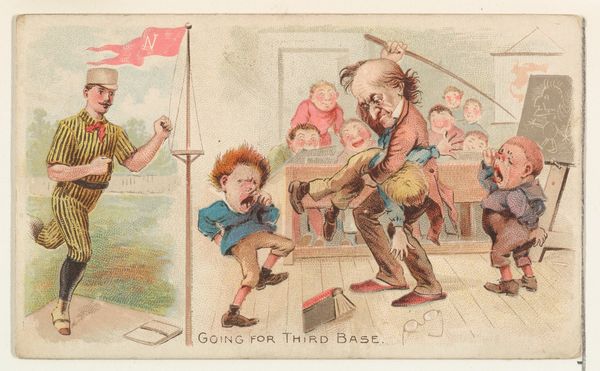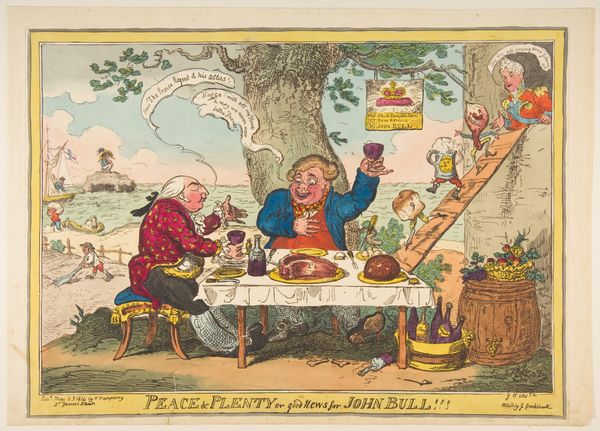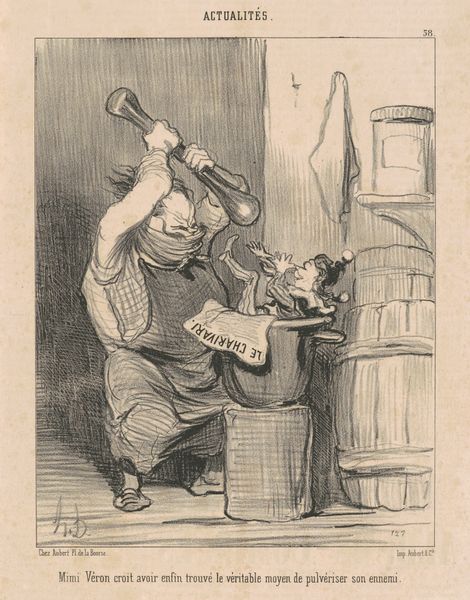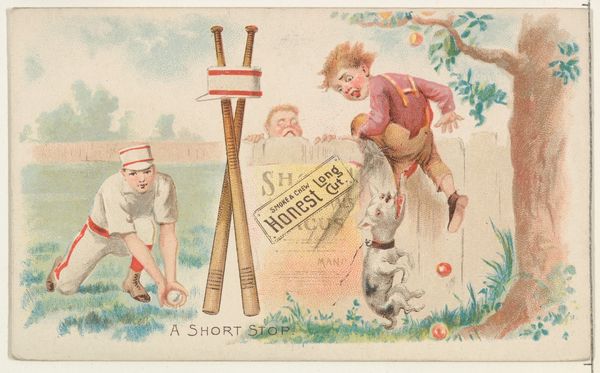
Six of Spades, Boil the Kettle, from Harlequin Cards, 2nd Series (N220) issued by Kinney Bros. 1889
0:00
0:00
drawing, coloured-pencil, print
#
drawing
#
coloured-pencil
# print
#
impressionism
#
coloured pencil
#
academic-art
Dimensions: Sheet: 2 3/4 × 1 1/2 in. (7 × 3.8 cm)
Copyright: Public Domain
Curator: This curious card, "Six of Spades, Boil the Kettle," comes from Kinney Brothers Tobacco Company's Harlequin Cards series, dating back to 1889. It's a coloured-pencil drawing and print, a rather unusual combination for the time. Editor: It's delightful, yet perplexing. My initial reaction is a sense of domestic absurdity. Why are playing card symbols integrated in what appears to be household chores? Curator: Precisely! What's fascinating here is Kinney Brothers’ branding strategy. These cards, inserted into cigarette packs, transformed everyday smoking into an elevated experience. Think about the paper quality, the inks; even this relatively ephemeral item required deliberate material sourcing. Editor: Yes, and placing it in the context of the late 19th century, consider how tobacco use was deeply ingrained in societal structures, gender dynamics, even colonial expansion. A card like this isn't merely about selling cigarettes; it’s reinforcing those broader power structures. Curator: The imagery of working-class individuals tending to the kettle raises a valid point. It’s essentially free advertisement relying on circulating, consumable art. How much these artists made and whether they saw it as art is less discussed. Editor: The placement of spade symbols seems strategically ambiguous. Are these women participating or subjugated? And the composition's repetition also mimics the routine and expected behaviors of the service roles. Curator: The integration of labour, production, and consumption becomes quite striking upon analysis. Kinney Brothers certainly elevated their branding above purely marketing; the choice to connect commerce with something approaching an aesthetic experience, however frivolous it seems, has larger repercussions. Editor: Indeed. This little card, though seemingly inconsequential, opens up a critical discourse about the intersectionality of class, labor, and advertising in late 19th century society. Curator: I agree. Analyzing “Boil the Kettle” demonstrates the true material processes in a context shaped by consumer culture. Editor: And that even ephemeral items like this hold rich cultural and societal commentary, if we choose to look.
Comments
No comments
Be the first to comment and join the conversation on the ultimate creative platform.

